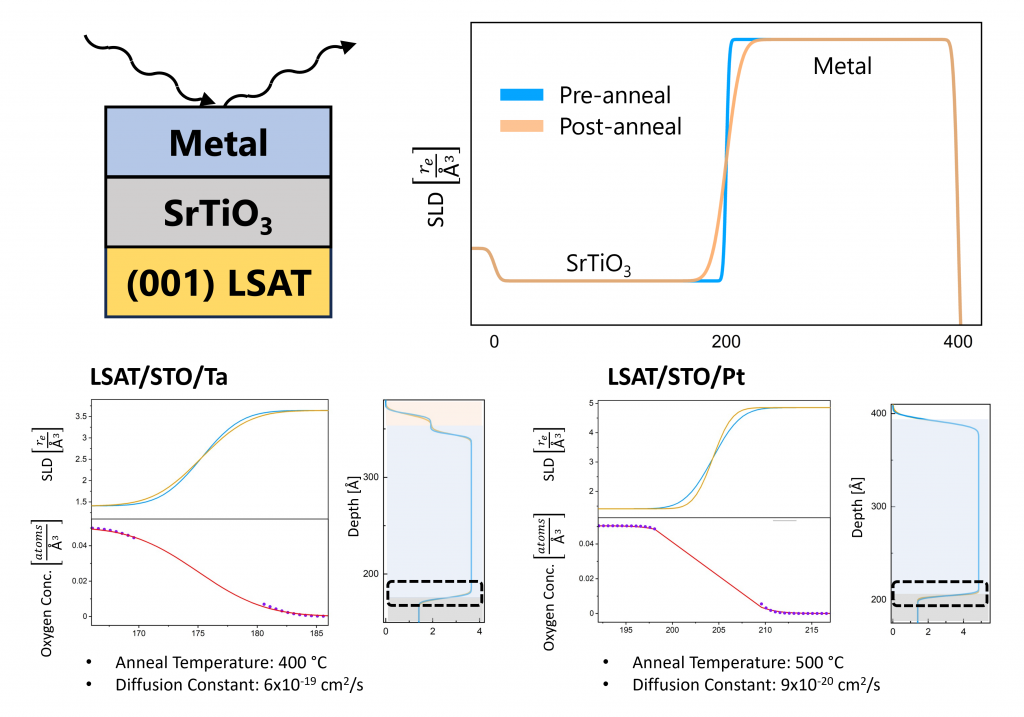Measuring ion diffusion coefficients at the nanoscale
Background
Transition metal oxide compounds host a range of phases and properties – like magnetism and superconductivity – not found in traditional electronic materials (e.g., Si, GaAs). Moreover, the spin-based interactions that control magnetism and superconductivity have significantly lower energy scales (meV) compared to the kinetic and electrostatic forces in these systems (eV). These two facts motivate the use of transition metal oxides as material platforms for the next generation of logic and memory technology, where spin states are used to encode information and switching can be done at lower energy.
However, switching spin states or inducing phase transformations in transition metal oxides is difficult to achieve by the electric field effect, due to the high carrier densities and short screening lengths in many oxides of interest. This has led researchers to develop the emerging field of nano-ionics, wherein ion migration under applied electric field drives property switching. This phenomenon underlies the resistive switching behavior in emerging ReRAM technologies and is actively being studied in magnetic systems.
A critical challenge in enabling nano-ionic technologies is the ability to measure ion migration in relatively small concentrations (0.1-1 at%) at small length scales (~1 nm or better). While some techniques, such as TEM-EELs and depth-profiling XPS, can approach these resolution needs in optimal conditions, there are significant limitations to both techniques, including the destruction of the sample.
Project Description
In this project, our group is developing a new method for measuring ion diffusion at the nanoscale using reflectometry, which is a form of low-angle X-ray or neutron (elastic) scattering.

This work is supported by the National Science Foundation under Award No. DMR-2144383.